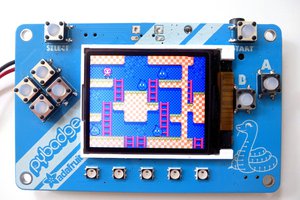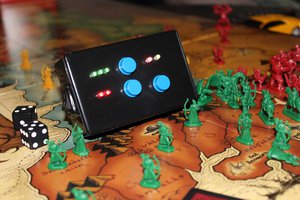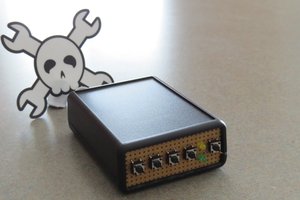Hardware to run (TGRK), a tiny handheld interpreter for the attiny85.
Program is stored in a 127 byte int8_t array.
Negative numbers (-128,-1) are keywords, positive numbers (0-127) are integers.
The device runs off a 1.5F, 5.5v supercapacitor which is charged by a small solar cell. To prevent the supercapacitor from exceeding its maximum of 5.5v, I have placed a 5.6v Zener diode to limit the voltage before the blocking diode and supercapacitor.
In direct sunlight it only charges up to ~5.2v, which is fine in my opinion. It can take 3-6 minutes to charge from 0v to 5.2v.
The device runs for about 30-45 minutes after a full charge. If the voltage goes below 2 volts, the device will go into deep sleep. When this happens the user will need to recharge it to keep working.
User input is 5 buttons on a resistor ladder on ADC2 of attiny85. Depending on what menu the user is in, they will do different things. With the exception the < and > buttons will always either be navigating menu, byte, or bit position.
- Left Button <
- Right Button >
- Toggle Button T
- Save Button S
- Run Button R
The devices output are two red LEDs. I chose red due to low forward voltage, and it is easier on the eyes if using the device in low light.
 Gordon
Gordon
 deʃhipu
deʃhipu
 Scott Clandinin
Scott Clandinin
